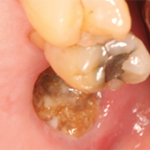NEW YORK (Reuters Health)—Switching women with rheumatoid arthritis (RA) from oral bisphosphonates to teriparatide increases bone mineral density (BMD) and trabecular bone score, according to a new report.
Researchers in Japan conducted an 18-month observational study of more than 175 women with RA (mean age: 66) who remained on oral bisphosphonates, switched to denosumab (DMAb), or switched to teriparatide (TPTD). Although bisphosphonates are important in treating osteoporosis, prolonged treatment can attenuate increases in BMD.
The women in this cohort had taken bisphosphonates for 40 months, on average. Treatment was maintained or switched according to the women’s preference and their physicians’ discretion. Patients with severe osteoporosis and high disease activity were preferentially switched to TPTD.
The article was published online Aug. 1 in the Journal of Bone and Mineral Metabolism.1
At both six and 18 months, the two groups who switched regimens showed significant increases in BMD of the lumbar spine, compared with women who stayed on oral bisphophonates. Those who switched specifically to TPTD also showed a significantly higher 18-month increase in trabecular bone score than did women who remained on bisphosphonates.
Switchers to TPTD showed significantly greater BMD and trabecular bone advantages than did switchers to DMAb.
Switching women with RA from bisphosphonates to DMAb or TPTD “may provide some useful osteoporosis treatment options,” the authors conclude. No previous studies have compared these two switching strategies, they note.
The three groups did not differ significantly in their rates of total fracture during follow-up.
“Many patients are stopping bisphosphonates due to fears of rare side effects, and it is important to have future options that work,” Dr. Kenneth G. Saag, of the Division of Clinical Immunology and Rheumatology at the University of Alabama at Birmingham, tells Reuters Health. “Persons with RA have a high risk of osteoporosis leading to fractures, and more proven treatment options are needed.”
The study authors did not reply to requests for additional information.
Reference
- Ebina K, Hirao M, Hashimoto J, et al. Assessment of the effects of switching oral bisphosphonates to denosumab or daily teriparatide in patients with rheumatoid arthritis. J Bone Miner Metab. 2017 Aug 1. doi: 10.1007/s00774-017-0861-4. [Epub ahead of print]

